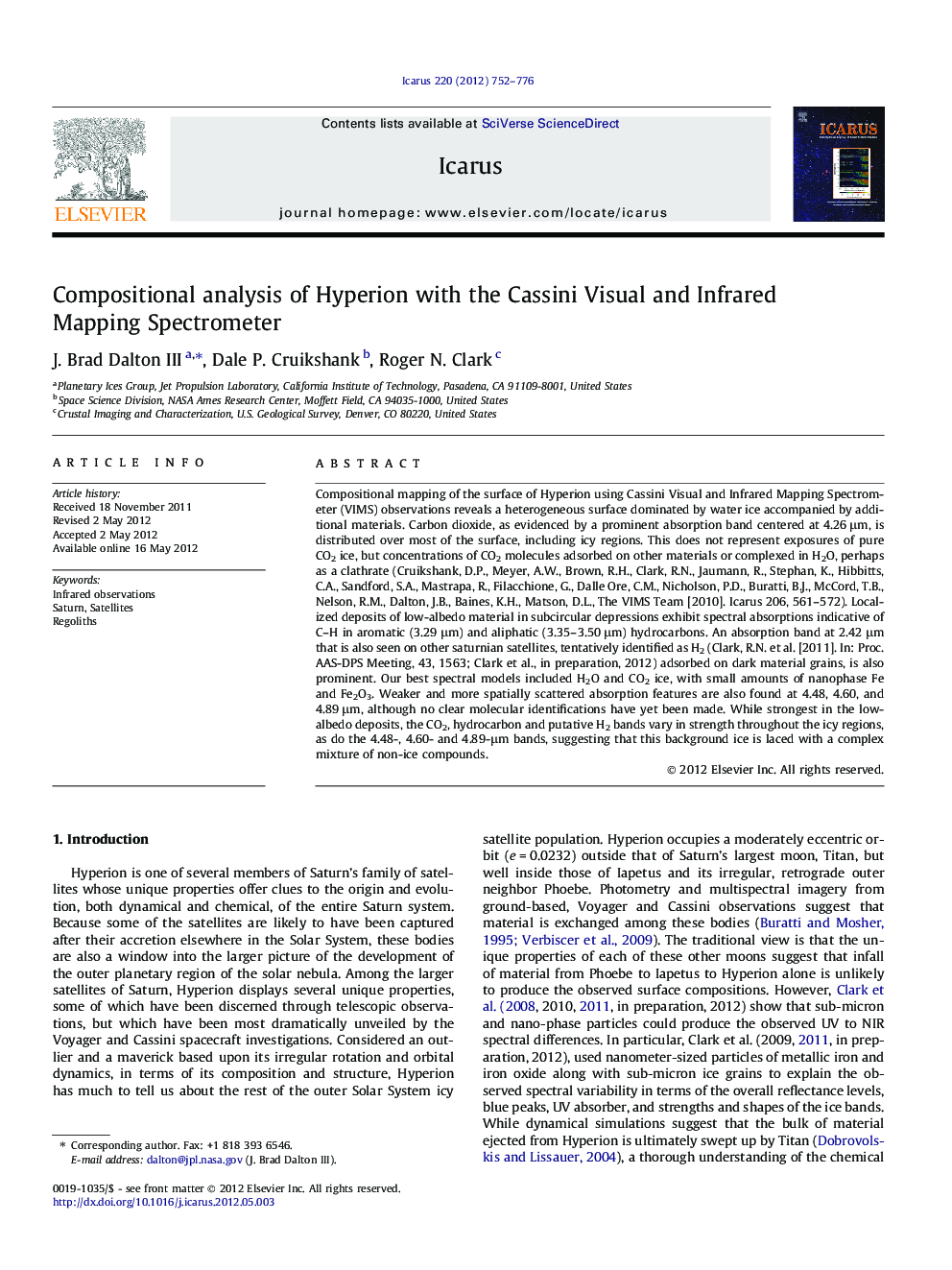| Article ID | Journal | Published Year | Pages | File Type |
|---|---|---|---|---|
| 1773441 | Icarus | 2012 | 25 Pages |
Compositional mapping of the surface of Hyperion using Cassini Visual and Infrared Mapping Spectrometer (VIMS) observations reveals a heterogeneous surface dominated by water ice accompanied by additional materials. Carbon dioxide, as evidenced by a prominent absorption band centered at 4.26 μm, is distributed over most of the surface, including icy regions. This does not represent exposures of pure CO2 ice, but concentrations of CO2 molecules adsorbed on other materials or complexed in H2O, perhaps as a clathrate (Cruikshank, D.P., Meyer, A.W., Brown, R.H., Clark, R.N., Jaumann, R., Stephan, K., Hibbitts, C.A., Sandford, S.A., Mastrapa, R., Filacchione, G., Dalle Ore, C.M., Nicholson, P.D., Buratti, B.J., McCord, T.B., Nelson, R.M., Dalton, J.B., Baines, K.H., Matson, D.L., The VIMS Team [2010]. Icarus 206, 561–572). Localized deposits of low-albedo material in subcircular depressions exhibit spectral absorptions indicative of C–H in aromatic (3.29 μm) and aliphatic (3.35–3.50 μm) hydrocarbons. An absorption band at 2.42 μm that is also seen on other saturnian satellites, tentatively identified as H2 (Clark, R.N. et al. [2011]. In: Proc. AAS-DPS Meeting, 43, 1563; Clark et al., in preparation, 2012) adsorbed on dark material grains, is also prominent. Our best spectral models included H2O and CO2 ice, with small amounts of nanophase Fe and Fe2O3. Weaker and more spatially scattered absorption features are also found at 4.48, 4.60, and 4.89 μm, although no clear molecular identifications have yet been made. While strongest in the low-albedo deposits, the CO2, hydrocarbon and putative H2 bands vary in strength throughout the icy regions, as do the 4.48-, 4.60- and 4.89-μm bands, suggesting that this background ice is laced with a complex mixture of non-ice compounds.
► We examine Cassini visible and near-infrared imaging spectroscopy of Hyperion. ► Surface mostly H2O ice together with CO2 and both aliphatic and aromatic hydrocarbons. ► CO2, H2, carbon- and nanophase Fe-bearing material concentrated in dark lag deposits. ► Carbon dioxide and other contaminants are mixed into the water ice everywhere. ► Hyperion bears primordial material and was probably formed elsewhere prior to capture.
